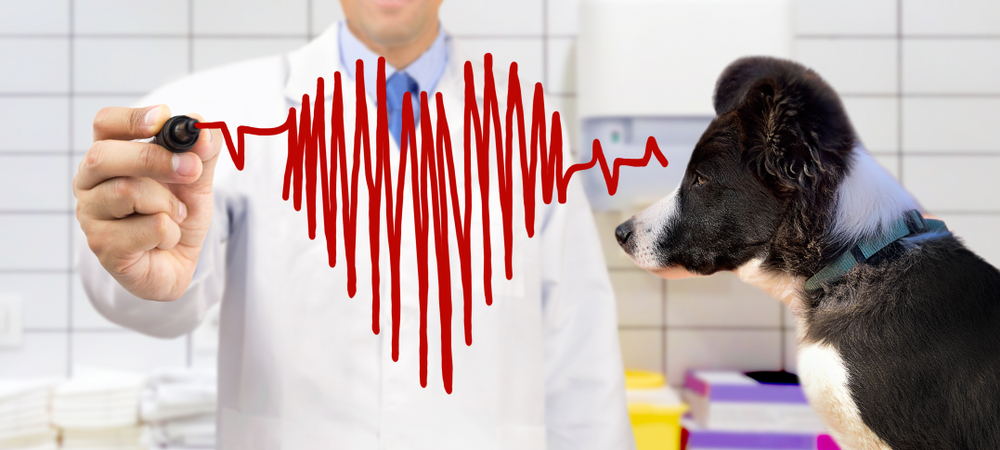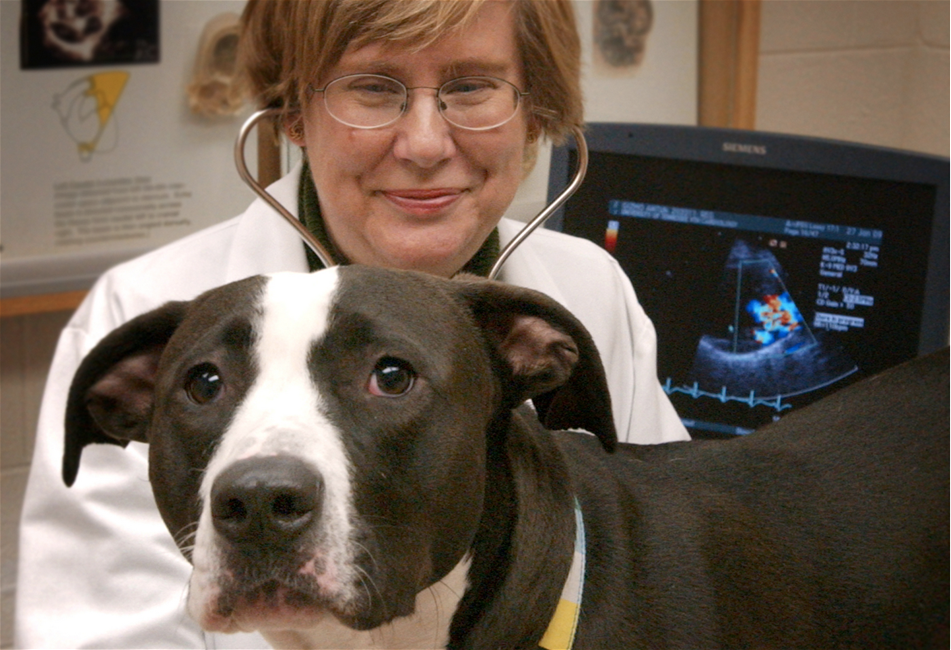What You Need to Learn About Veterinary Providers: An Overview of Diagnostic Devices and Procedures
Vet services play an important duty in preserving the wellness of pet dogs. Normal exams can reveal surprise health and wellness concerns beforehand. Different analysis devices and treatments, such as blood tests and imaging methods, provide crucial insights into an animal's wellness. Understanding these approaches is crucial for family pet proprietors. What certain diagnostic procedures are most generally used, and how can they affect a pet's treatment plan?
Relevance of Regular Vet Exams
While many family pet owners might ignore the relevance of normal vet exams, these visits are crucial for keeping an animal's overall health. Routine sees to the veterinarian enable early detection of potential wellness issues prior to they intensify into serious issues. Regular check-ups usually include inoculations, which are essential for preventing infectious illness that could badly impact a family pet's health. Furthermore, these visits offer a possibility for veterinarians to evaluate the animal's weight, oral health and wellness, and general condition, making sure that the pet is growing. During these check outs, pet proprietors can additionally receive valuable guidance on diet, exercise, and precautionary treatment customized to their certain pet dog's demands.
Common Diagnostic Treatments in Veterinary Medicine
In vet medicine, accurate diagnosis is essential for reliable therapy. Common diagnostic treatments include blood screening strategies, progressed imaging innovations, and urinalysis, each playing a significant role in determining wellness issues. Recognizing these approaches enhances the capacity to offer ideal take care of animal patients.
Blood Checking Strategies
Blood testing methods function as essential diagnostic devices in veterinary medication, enabling vets to assess the wellness of animals precisely. These techniques include collecting blood samples to assess various elements, such as white and red blood cells, platelets, and biochemical markers. Usual tests include full blood counts (CBC), which examine total health and identify infections, and biochemical panels, which analyze body organ feature and metabolic status. Furthermore, serological examinations can identify certain conditions through antibody discovery. Blood screening is minimally invasive and offers critical information that helps in identifying problems, keeping track of wellness standing, and evaluating reactions to therapies. On the whole, these techniques play an essential function in making certain ideal take care of animals and animals alike.
Imaging Technologies Made Use Of
Diagnostic imaging technologies are vital devices in veterinary medication, enhancing blood screening strategies by giving aesthetic understandings into a pet's internal frameworks. Usual imaging methods consist of X-rays, which work for reviewing bone cracks and detecting international things, and ultrasound, which permits for real-time visualization of soft cells and body organs. Magnetic vibration imaging (MRI) uses in-depth photos of complex anatomical locations, particularly in neurological analyses. Calculated tomography (CT) supplies cross-sectional pictures, enhancing analysis precision for different conditions. Each of these technologies help vets in identifying health problems, preparing treatments, and keeping track of recovery. By including imaging modern technologies, veterinary professionals can much better examine an animal's wellness and make notified decisions concerning their treatment.
Urinalysis and Diagnostics
Urinalysis acts as a critical analysis tool in vet medicine, providing beneficial insights right into an animal's overall health and assisting in the detection of various problems. This non-invasive procedure assesses urine examples to evaluate kidney feature, hydration condition, and metabolic disorders. Typical components taken a look at include details gravity, pH degrees, glucose, proteins, and the existence of blood or bacteria. Irregular findings can indicate concerns such as urinary system infections, diabetes mellitus, or kidney condition. To enhance analysis accuracy, urinalysis is often done combined with other examinations, such as blood job and imaging research studies. Early discovery through urinalysis can cause prompt interventions, enhancing the diagnosis for many vet people. It is an important element of detailed veterinary care.
Comprehending Blood Examinations and Research Laboratory Analysis
Comprehending blood examinations and research laboratory analysis is crucial in vet medicine as it helps in detecting various health and wellness problems in pets. Various kinds of blood tests supply important info concerning an animal's interior state, while analyzing lab results requires careful consideration of countless factors. This area will certainly discover the types of blood tests readily available and the importance of their outcomes.
Sorts Of Blood Examinations
Blood examinations play a vital duty in vet medicine, giving vital understandings right into an animal's health and wellness status. Various types of blood examinations are made use of, each offering different functions. Complete blood counts (CBC) assess overall wellness and detect problems such as anemia or infection. Biochemical accounts examine body organ function by determining electrolytes and enzymes, using understandings right into metabolic health and wellness. Serological tests identify specific antibodies or pathogens, assisting in the diagnosis of infections or autoimmune illness. Blood inputting warranties safe transfusions, while coagulation tests evaluate the blood's capability to embolisms, crucial for medical treatments. These tests jointly improve diagnosis, treatment planning, and surveillance of a pet's wellness, highlighting the relevance of comprehensive research laboratory evaluation in vet treatment.

Analyzing Lab Results
A thorough analysis of laboratory results is crucial for exact diagnosis and therapy in veterinary medication. Interpreting lab results requires an understanding of normal reference varieties and the relevance of inconsistencies. Blood examinations can disclose numerous health indications, such as body organ feature, electrolyte equilibrium, and the visibility of infections. Vets need to take into consideration the whole professional image, consisting of the pet's background, checkup searchings for, and any type of signs provided. Variations in results might emerge from variables such as age, type, and underlying health and wellness conditions. Consequently, lab outcomes must not be checked out alone however rather as part of an all-encompassing diagnostic approach. Exact interpretation permits tailored therapy strategies and far better end results for vet people.
Imaging Techniques: X-rays, Ultrasounds, and Beyond
Imaging techniques are essential tools in vet medication, giving crucial insights into the health and health of pets. Among the most typically made use of methods are X-rays and ultrasounds. X-rays are invaluable for picturing bone structures, aiding veterinarians recognize cracks, tumors, or international things. This method is quick and non-invasive, making it my company perfect for immediate situations.Ultrasounds, on the various other hand, make use of acoustic waves to develop pictures of soft cells and organs. This method is particularly beneficial for analyzing the heart, abdominal area, and reproductive organs, enabling vets to evaluate problems like liquid accumulation or body organ abnormalities.Beyond X-rays and ultrasounds, progressed imaging methods such as computed tomography (CT) and magnetic vibration imaging (MRI) are increasingly used in vet practice. These techniques offer in-depth cross-sectional images, boosting the accuracy of diagnoses and therapy strategies. Board Certified Veterinary Cardiologist. On the whole, imaging techniques play a necessary duty in guaranteeing reliable vet treatment
The Role of Biopsies in Diagnosing Family Pet Wellness Issues
Accuracy in diagnosing health problems in family pets often rests on the usage of biopsies, which provide conclusive details concerning cells abnormalities. A biopsy involves the elimination of a tiny sample of tissue for exam under a microscope, allowing veterinarians to identify various conditions, including infections, tumors, and inflammatory diseases. This diagnostic tool is important for differentiating between malignant and benign growths, directing treatment choices, and evaluating the extent of a condition.Biopsies can be performed making use of numerous strategies, such as needle ambition, incisional biopsies, or excisional biopsies, depending upon the place and type of cells entailed. The selection of technique may affect recuperation time and the quantity of cells gathered. Ultimately, the information amassed from a biopsy can bring about targeted treatments, enhancing outcomes for pets facing serious wellness difficulties. Vets highlight the value of this treatment in more attaining precise medical diagnoses and efficient treatment strategies.
Advanced Diagnostic Devices: Endoscopy and CT Checks

Advanced diagnostic tools, such as endoscopy and CT scans, play a vital role in modern-day veterinary medication, providing non-invasive methods to envision inner frameworks and diagnose numerous conditions in pets. Endoscopy entails making use of a versatile tube geared up with a video camera, allowing veterinarians to examine the stomach tract and breathing system directly. This strategy can reveal irregularities such as lumps, foreign bodies, or swelling, making it possible for targeted treatment plans.CT scans, on the other hand, use innovative imaging modern technology to create comprehensive cross-sectional photos of the body (CT Scans For Dogs). This approach is particularly valuable for examining facility frameworks like the mind, spine, and joints. By providing high-resolution images, CT scans help vets in determining concerns that might not be noticeable via traditional radiography. Together, these advanced tools enhance diagnostic accuracy, enhance treatment results, and eventually add to far better overall animal health and wellness administration

Translating Test Outcomes: What Animal Owners Should Know
Comprehending examination results can be a tough job for pet proprietors, especially after innovative procedures like endoscopy and CT scans have actually been done. Interpreting these outcomes needs a grasp of clinical terminology and a clear understanding of what the searchings for suggest about the family pet's health. Vets often supply explanations, however the intricacy of the results can still bring about confusion.Pet owners must proactively participate in discussions with their veterinarians, asking questions to clarify any kind of unpredictabilities. It is vital to understand unusual versus typical outcomes and the effects for the family visit their website pet's therapy strategy. Additionally, recognizing that some results may need more screening or monitoring can help owners stay informed concerning their family pet's wellness journey. Ultimately, a joint approach between pet dog owners and vet specialists fosters better health outcomes and boosts the overall care experience for animals.
Often Asked Inquiries
Just how Do I Pick the Right Veterinary Center for My Pet dog?
Picking the appropriate vet clinic includes investigating neighborhood choices, assessing qualifications, going to centers, and analyzing team interactions (Board Certified Veterinary Cardiologist). Prioritizing recommendations from trusted resources can assist assure the ideal care and setting for a family pet's health requirements
What Should I Do if My Family Pet Rejects to Go to the Vet?
When a pet dog refuses to go to the vet, it's suggested to stay tranquil, usage deals with or playthings to attract them, and consider arranging a home see if anxiousness lingers. Perseverance and favorable support are crucial.
Are There Telehealth Options for Vet Solutions?
Telehealth alternatives for vet solutions are progressively offered, enabling pet proprietors to speak with vets remotely. These services make it possible for discussions regarding wellness worries, recommendations on small conditions, and follow-ups without needing to check out a clinic.
Just how Frequently Should My Pet Have Dental Exams?
The regularity of oral examinations for pets usually depends on their age and type. Normally, vets advise annual dental examinations, although some family pets might require even more constant sees to preserve optimal oral health.

What Are the Prices Connected With Vet Diagnostics?
The expenses connected with veterinary diagnostics can vary widely, normally varying from standard tests like blood job to sophisticated imaging techniques. Variables affecting costs consist of the clinic's location, devices utilized, and certain tests required for every animal. Veterinary services play an important role in preserving the health and wellness of family pets. While several animal owners might ignore the relevance of normal vet exams, these appointments are important for preserving an animal's overall health. Furthermore, these visits offer a chance for veterinarians to evaluate the pet's weight, dental health and wellness, and overall problem, guaranteeing that the pet is growing. Precision in detecting wellness problems in pet dogs often hinges on the usage of biopsies, which give definitive info regarding tissue irregularities. Furthermore, recognizing that some outcomes might need additional testing or monitoring can aid proprietors stay informed regarding their pet's health trip.